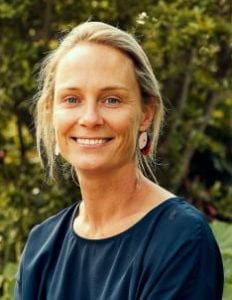Australia
- People Involved
- Outputs Table
- Outputs (publications, reports, conference presentations)
- Acknowledgement/Funders
 Dr Gary Sacks
Dr Gary Sacks
Senior Research Fellow
Faculty of Health, Deakin Population Health SRC
Melbourne Burwood Campus, Deakin University Melbourne, Australia
Email: Gary Sacks
 Professor Bruce Neal
Professor Bruce Neal
Deputy Executive Director
George Institute Australia
Newtown, Sydney, Australia
Email: Bruce Neal
 Professor Amanda Lee
Professor Amanda Lee
Professor Public Health Policy
School of Public Health
Faculty of Medicine, The University of Queensland,
Herston, Queensland, Australia
Email: Professor Amanda Lee
 Dr Bridget Kelly
Dr Bridget Kelly
Senior Lecturer in Public Health
University of Wollongong
Wollongong, Australia
Email: Dr Bridget Kelly
 Prof Kathryn Backholer
Prof Kathryn Backholer
Co – Director Global Centre for Preventive Health and Nutrition (GLOBE)
Fellow Public Health Association of Australia
School of Health and Social Development, Deakin University
Email: Kathryn Backholer
 Oriana Ruffini
Oriana Ruffini
Associate Research Fellow
Global Centre for Preventive Health and Nutrition (GLOBE), Institute for Health Transformation
Deakin University
Burwood VIC, Australia
Email: Oriana Ruffini
 Ella Robinson
Ella Robinson
Research Fellow
Global Centre for Preventive Health and Nutrition (GLOBE), Institute for Health Transformation
Deakin University
Burwood VIC, Australia
Email: Ella Robinson
| Module | Status (as of March 2025) |
| Overall |
|
| Public Sector (Food EPI) |
|
| Private Sector |
|
| Food Composition |
|
| Food Labelling | |
| Food Promotion |
In 2024, the food promotion team is currently developing two INFORMAS protocols: 1) monitoring digital media and 2) monitoring marketing exposures across media and settings. This work draws on multiple studies that the team has conducted. Published the following research articles:
Published papers on food marketing monitoring:
|
| Food Prices |
|
| Food Retail |
|
| Food Provision |
|
| Food Trade & Investment |
Ruffini, O., Relf, C., Mann, D., Blake, M. R., Carrad, A., Reeve, B., Barbour, L., Vanderlee, L., Vandevijvere, S., & Sacks, G. (2024). Development of the Local Food Systems Policy Index (Local Food-EPI+) tool and assessment process to benchmark the implementation of local government policies for creating healthy, equitable and environmentally sustainable food systems. Public health nutrition, 27(1), e191. https://doi.org/10.1017/S136898002400140X
Nicholson E, Kelly B. Establishing the minimum media time sample required to obtain reliable estimates of children’s digital media food marketing exposures. Current Developments in Nutrition 2023; 7 (6). doi.org/10.1016/j.cdnut.2023.100092.
Brooks R, Christidis R, Carah N, Kelly B, Martino F, Backholer K. Turning users into “unofficial brand ambassadors”: marketing of unhealthy food and non-alcoholic beverages on TikTok. BMJ Global Health 2022;7:e009112.
Kelly B, Bosward R, Freeman B. Australian Children’s Exposure to, and Engagement With, Web-Based Marketing of Food and Drink Brands: Cross-sectional Observational Study. Journal of Medical Internet Research. 2021;23(7):e28144.doi:10.2196/28144
Richmond K, Watson W, Hughes C, Kelly B. Children’s trips to school dominated by unhealthy food advertising in Sydney, Australia. Public Health Research & Practice. 2020;30(1):e3012005. https://doi.org/10.17061/phrp3012005
Sacks, G., Robinson. E., Vandevijvere, S., Cameron, A.J., Ni Mhurchu, C., Lee, A., … Swinburn, B. (2019). BIA‐Obesity (Business Impact Assessment—Obesity and population‐level nutrition): A tool and process to assess food company policies and commitments related to obesity prevention and population nutrition at the national level. Obesity Reviews, 1-12. doi.org/10.1111/obr.12878
Sacks, G., Robinson, E., Cameron, A.J., Vanderlee, L., Vandevijvere, S., Swinburn, B. (2020). Benchmarking the Nutrition Related Policies and Commitments of Major Food Companies in Australia, 2018. International Journal of Environmental Research and Public Health, 17:6118. DOI: 10.3390/ijerph17176118
Lee A; Lewis M. Testing the Price of Healthy and Current Diets in Remote Aboriginal Communities to Improve Food Security: Development of the Aboriginal and Torres Strait Islander Healthy Diets ASAP (Australian Standardised Affordability and Pricing) Methods. Int J Environ Res Public Health. 2018 Dec 19;15(12). pii: E2912. doi: 10.3390/ijerph15122912.
Love P, Whelan J, Bell C, Grainger F, Russell C, Lewis M, Lee A. Healthy Diets in Rural Victoria-Cheaper than Unhealthy Alternatives, Yet Unaffordable. Int. J. Environ. Res. Public Health 2018, 15, 2469.
Lee AJ, Kane S, Lewis M, Good E, Pollard CM, Landrigan TJ and Dick M. Healthy diets ASAP – Australian Standardised Affordability and Pricing methods protocol. Nutrition Journal 2018;17:88. doi: org/10.1186/s12937-018-0396-0
Lee A, Affordability of fruit and vegetables and dietary quality worldwide-Commentary, The Lancet Global Health, Invited contribution, Published Online, August 23, 2016 http://dx.doi.org/10.1016/S2214-109X(16)30206-6, 4: October 2016
Lewis M and Lee A, Costing ‘healthy’ food baskets in Australia – A systematic review of food price and affordability monitoring tools, protocols and methods, Public Health Nutrition 19: (16) 2872-2886, published online November 2016 http://dx.doi.org/10.1017/S1368980016002160
Lee AJ, Kane S, Ramsey R, Good E, Dick M Testing the price and affordability of healthy and current (unhealthy) diets and the potential impacts of policy change in Australia, BMC Public Health 2016, 16:315 doi: 10.1186/s12889-016-2996-y
Reports
The George Institute for Global Health. (2023). FoodSwitch: State of the Food Supply Report: A Five-Year Review November 2023.
The George Institute for Global Health. (2022). FoodSwitch: State of the Food Supply Australia 2022. Retrieved from https://foodenvironmentdashboard.com.au/wp-content/uploads/sites/203/2023/11/FoodSwitch-Food-Supply-Report-2022.pdf
The George Institute for Global Health. (2021). FoodSwitch: State of the Food Supply Australia 2021. Retrieved from https://www.georgeinstitute.org/sites/default/files/SotFS-Report.pdf
The George Institute for Global Health. (2020). FoodSwitch: State of the Fast Food Supply Australia May 2020. Retrieved fromhttps://foodenvironmentdashboard.com.au/wp-content/uploads/sites/203/2021/05/State-of-the-fast-food-supply-2020.pdf
Neal, B., Sacks, G., Shahid, M., Taylor, F., Huffman, M. The George Institute for Global Health. (2019). FoodSwitch: State of the Food Supply April 2019. Retrieved from https://www.georgeinstitute.org/sites/default/files/food_supply_report.pdf
Policies for tackling obesity and creating healthier food environments 2019 progress update Australian governments March 2019. https://www.foodpolicyindex.org.au/
Inside our Supermarkets Australia 2018: Assessment of company policies and commitments related to obesity prevention and nutrition.https://www.insideourfoodcompanies.com.au
Inside our Food and Beverage Manufacturers Australia 2018: Assessment of company policies and commitments related to obesity prevention and nutrition.https://www.insideourfoodcompanies.com.au/
Inside our Quick Service Restaurants Australia 2018: Assessment of company policies and commitments related to obesity prevention and nutrition.https://www.insideourfoodcompanies.com.au/
Policies for tackling obesity and creating healthier food environments Scorecard and priority recommendations for Australian governments. 2017 Food policy Index. https://www.insideourfoodcompanies.com.au/
A healthy diet is cheaper than junk food but a good diet is still too expensive for some. The Conversation, May 25, 2016 https://theconversation.com/a-healthy-diet-is-cheaper-than-junk-food-but-a-good-diet-is-still-too-expensive-for-some-57873
Are healthy diets really more expensive. TAPPC Findings brief https://www.google.com/url?sa=t&rct=j&q=&esrc=s&source=web&cd=11&ved=2ahUKEwihuLKBrNHhAhVSJHIKHc9UDucQFjAKegQIAhAC&url=https%3A%2F%2Fpreventioncentre.org.au%2Fwp-content%2Fuploads%2F2017%2F03%2F1702_FB_LEE_4p_final_lr.pdf&usg=AOvVaw1KJYb0r03csIF8FCY6VCyI
Healthy Diets ASAP (Australian Standardised Affordability and Pricing) survey, Canberra: The price, price differential and affordability of current (unhealthy) and healthy diets and potential impacts of policy change; Final report to ACT Health, 20 May 2016 (Lee A, Kane S, Lewis M)
Healthy Diets ASAP (Australian Standardised Affordability and Pricing) survey, Sydney: The price, price differential and affordability of current (unhealthy) and healthy diets and potential impacts of policy change; Final report to NSW Department of Health, 20 May 2016 (Lee A, Kane S, Lewis M)
Presentations
Lee A, Kane S and Lewis M, Are heathy diets really more expensive?, International congress of Obesity, World Obesity, Vancouver, Canada, 1-4 May 2016 (poster presentation).
Lee A, Measuring the price of healthy and current diets, International Conference on Diet and Activity Methods, Brisbane September 2015.
Lee A, Monitoring and benchmarking food price and affordability internationally; Third INFORMAS meeting, QUT Brisbane, September 2016.
Lee A, Food Prices Symposium, ISBNPA Conference, Edinburgh June 2015 (co-convenor).
Lee A, Measuring the cost of healthy diets, Food Prices Methods Symposium, ISBNPA Conference, Edinburgh June 2015.
Lee A, Nutrition policy and the price of healthy food, Research Collaboration meeting, Australian China Centre for Public Health, Sun Yat Sen University, Guangzhou, PR China, 10-12 May 2015.
Workshop
National Healthy Diets ASAP Forum, sought and achieved agreement on final methods for nationally standardised food price and affordability surveys. Brisbane, Australia 10 March 2016.
The Medical Research Future Fund Boosting Prevention Project (BP3): Diet and chronic disease prevention: supporting implementation of priority actions in the food and nutrition system. See project website: https://preventioncentre.org.au/our-work/research-projects/supporting-priority-actions-in-the-food-and-nutrition-system/ (funding the APP and current development and survey work in Australia)